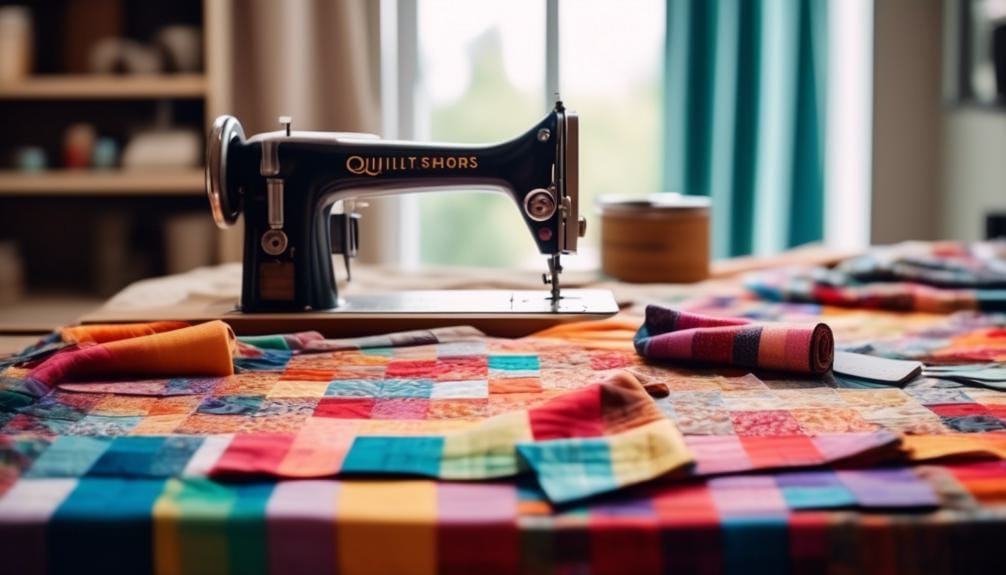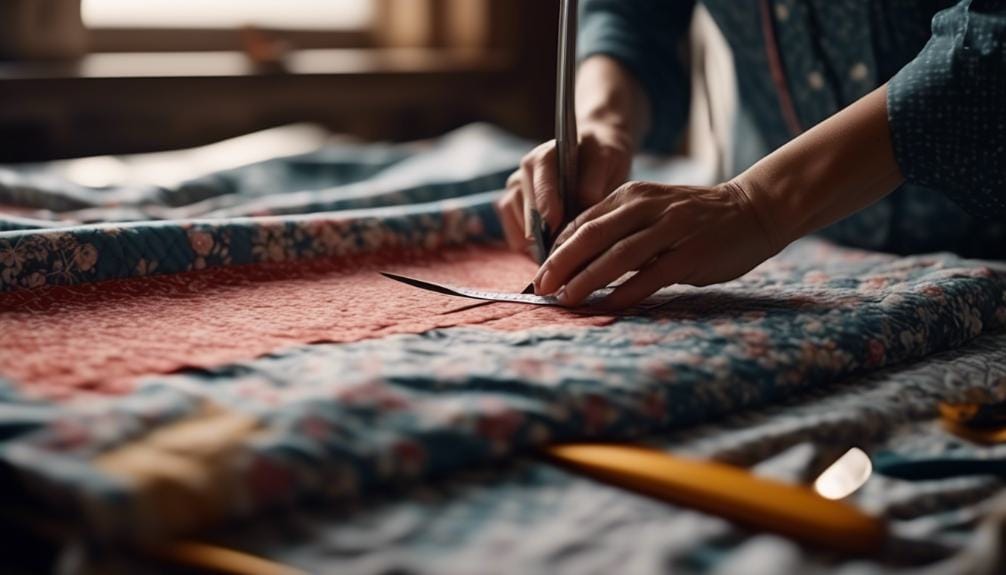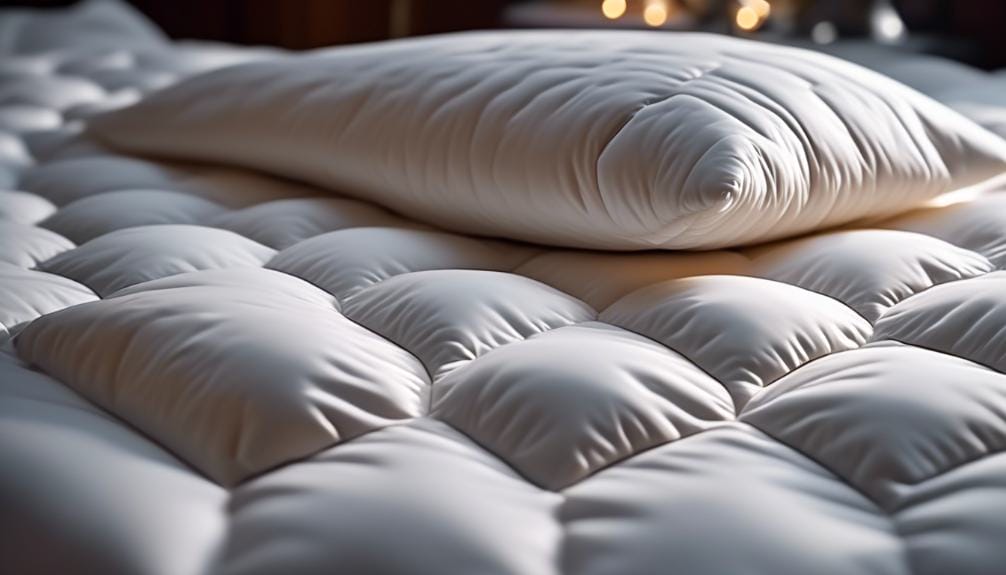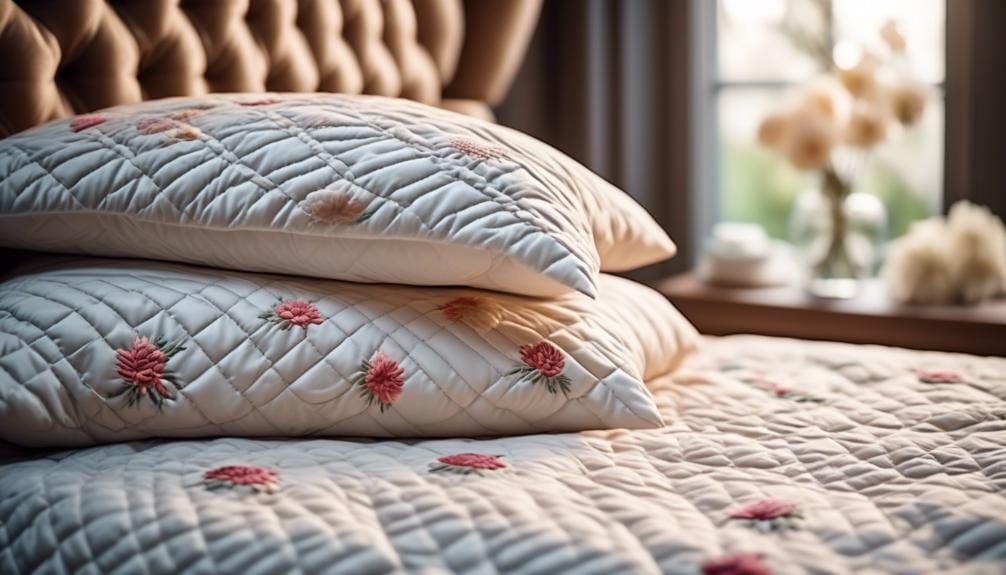Can You Quilt a Duvet Cover? Exploring Quilting Inspiration
You’ve mastered the art of quilting, and now you’re ready for a new challenge. Can you quilt a duvet cover?
The process of quilting a duvet cover opens up a world of creative possibilities and unique inspiration. From selecting the right materials to the final stitches, there’s a methodical approach to transforming a duvet cover into a beautifully quilted masterpiece.
As you explore this technique, you’ll discover how to breathe new life into an old duvet cover and unleash your quilting creativity in unexpected ways.
Key Takeaways
- Measuring and cutting the duvet cover accurately is essential for achieving the desired quilt size.
- Preparing and layering the batting correctly ensures a smooth and even quilted surface.
- Sewing the quilted layers together requires starting from the center and spacing the quilting lines properly to prevent shifting.
- Adding finishing touches and decorations allows for personalization and creativity in the quilted duvet cover.
Materials Needed for Quilting a Duvet Cover

To quilt a duvet cover, you’ll need to gather specific materials, including a duvet cover, batting, fabric for backing, thread, quilting ruler, cutting mat, rotary cutter, pins or clips, sewing machine, iron, and scissors.
The duvet cover serves as the top layer of the quilt and provides the design basis. The batting is the middle layer, offering warmth and softness to the quilt. Select a fabric for the backing that complements the duvet cover. When choosing thread, opt for a color that blends seamlessly with the duvet cover and backing fabric.
The quilting ruler, cutting mat, and rotary cutter are essential for precise measuring and cutting of the fabric and batting. Pins or clips are used to hold the layers together during the quilting process. A sewing machine is indispensable for efficiently stitching the layers together. An iron is necessary for pressing the fabric and ensuring smooth, wrinkle-free quilt layers. Finally, scissors are needed for trimming excess fabric and threads.
Ensuring you have all these materials will set you on the path to successfully quilt your duvet cover.
Measuring and Cutting the Duvet Cover

If needed, you can use a quilting ruler to measure the length and width of the duvet cover. When quilting a duvet cover, accuracy is crucial for a professional finish. Here’s how to measure and cut the duvet cover for your quilting project:
- Consider the desired size of your finished quilt and subtract a few inches for seam allowances. This ensures that the quilt fits snugly inside the duvet cover and allows for sewing the seams without compromising the quilt’s size.
- Lay the duvet cover flat on a cutting mat and use the quilting ruler and rotary cutter to cut according to measurements. Double-check the measurements before moving on to ensure even sizing. This step is essential for achieving uniformity and precision in the quilt-making process.
- Remove buttons or zippers if necessary using a seam ripper. This allows for easy access to the inside of the duvet cover and ensures that the quilting process goes smoothly without any obstructions.
Preparing and Layering the Batting

When preparing and layering the batting for your duvet cover quilting project, ensure that you measure the dimensions of the duvet cover to determine the appropriate size needed for the batting. Cut the batting to match the measurements of the duvet cover, slightly smaller to allow for seam allowances. Smooth out any wrinkles or creases in the batting before layering it inside the duvet cover. Lay the duvet cover flat, place the batting on top, align the edges and corners, and secure the layers evenly with pins or clips. When sewing the layers together, maintain a consistent seam width and reinforce corners and edges with backstitches for durability.
| Quilting Tips | Benefits |
|---|---|
| Take your time | Ensures a neat and professional finish |
| Use high-quality batting | Provides a plush and cozy feel |
| Experiment with different quilting patterns | Adds a unique and personalized touch |
| Pay attention to details | Achieve a polished and layered look |
Sewing the Quilted Layers Together

Sew the quilted layers together by starting at the center and working outward, ensuring the layers remain smooth and wrinkle-free as you stitch. Here’s how to do it:
- Ensure quilting lines aren’t too far apart to prevent bunching and shifting after washing. Properly spaced lines will keep the layers securely attached and maintain the quilt’s structure.
- Use monofilament thread for lighter quilting, as it’s less heavy than regular thread. This thread is ideal for maintaining the integrity of the quilted layers without adding excessive weight.
- Consider the batting package for the minimum space between quilting lines. The thickness and loft of the batting can impact the distance between quilting lines, so choose batting that suits your desired quilting pattern and density.
Adding Finishing Touches and Decoration

To add a decorative and personalized touch to your quilt, consider incorporating embellishments such as:
- Decorative stitching: Add intricate patterns and textures around quilt blocks or along borders.
- Embroidery: Personalize the duvet cover with designs, monograms, or motifs.
- Fabric or lace trim: Attach to the edges for a polished and decorative finish.
- Appliqué shapes: Strategically place onto the quilt top for personalized embellishments.
- Fabric paint or markers: Create unique designs or patterns on the quilt.
In addition, experiment with different quilting patterns and techniques, such as stippling, free-motion quilting, or trapunto, to add visual interest and texture. These finishing touches and decorations can elevate the overall aesthetic appeal of your quilted duvet cover, making it a unique and personalized piece.
Frequently Asked Questions
Can I Turn a Duvet Cover Into a Quilt?
Yes, you can turn a duvet cover into a quilt. Consider quilting line spacing, final quilt size, and layering challenges. Options include buying pre-made quilt tops and purchasing batting and backing separately. Washing frequency impacts quilting distance.
Do You Put a Quilt Over a Duvet?
Yes, you can put a quilt over a duvet for added warmth and decorative layering. Ensure the quilt complements the duvet in color and style. Consider the season and climate for appropriate quilting materials and weights.
Can You Insert a Comforter Into a Duvet Cover?
Yes, you can insert a comforter into a duvet cover. Ensure the comforter matches the duvet cover’s dimensions, then lay the cover flat, insert the comforter, and button or zip it closed for a snug fit.
What Do I Do With a Duvet Cover?
You can repurpose a duvet cover into a beautiful quilt. Consider washing frequency, quilting distance, and potential pitfalls. Explore alternative options for quilt tops and modifications like making pillow shams or using leftover fabric for binding strips.
Conclusion
In conclusion, quilting a duvet cover is a creative and enjoyable way to repurpose and personalize your bedding. By following the steps outlined in this article, you can transform a duvet cover into a beautiful and functional quilt that showcases your sewing skills.
So gather your materials, measure and cut the duvet cover, prepare and layer the batting, sew the quilted layers together, and add finishing touches to create a unique work of art.
Happy quilting!
